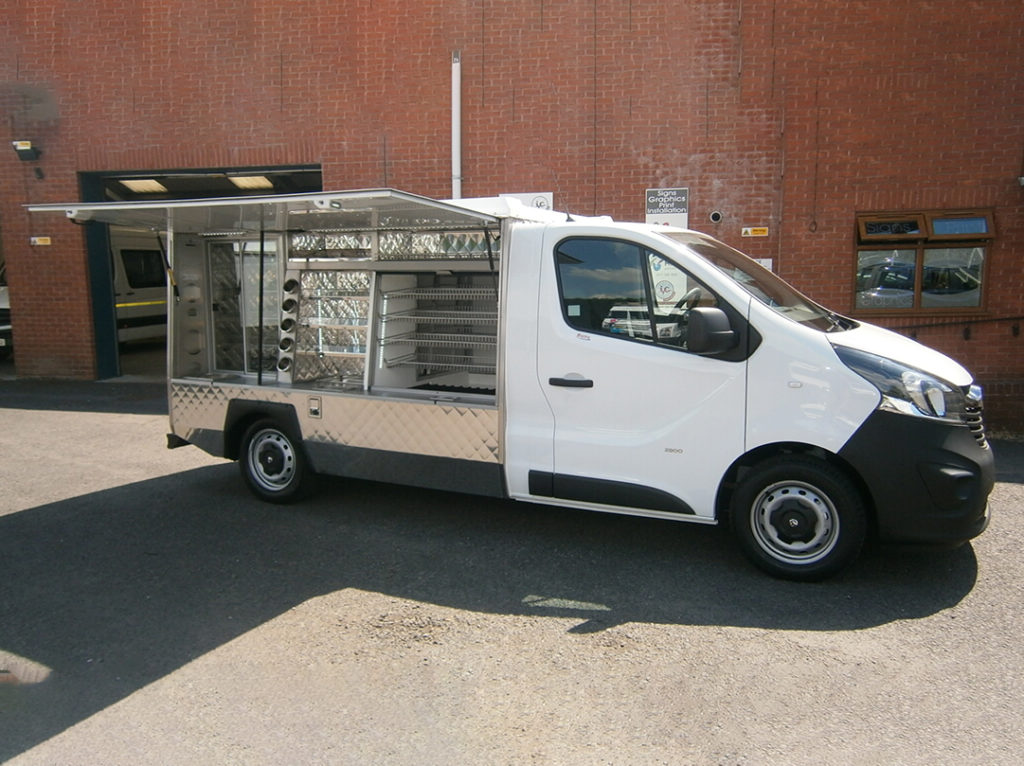The science of food transportation is intricate, aiming to ensure precision, as any mishap can lead to significant health implications. In the UK, stringent regulations are in place to guarantee that perishable foods reach their intended destination safely and are consumable.
Cool Running Rental are experts in providing quality refrigerated vans, specialising in food transportation, all across the UK. Ranging from chiller to full-freezer vans, Cool Running Rental is the perfect solution to all your catering and food transportation needs. This blog will outline some of the correct safety measures you must always practise, and how Cool Running Rental can be your trusted partner.

Important Food Storage Safety Measures
No matter whether you’re a small catering business or a large, industrial food delivery service, there are measures every company must ensure are in place before each delivery:
- Your mode of transport must be clean and safe for use upon beginning every journey – this includes all areas where food will be stored and/or touched, e.g. floors, walls, ceilings, and shelving.
- When loading stock into your vehicle, careful measures must be taken to ensure no cross-contamination between different foods. If transporting cooked meat with raw produce, there should be absolutely no touching of containers. The best practice is to completely separate containers, or better yet, transport them separately.
- All cargo must be kept at the correct temperature:
- Chilled food (Poultry, egg dishes, ground meat, beef, pork, lamb, ham, fish, shellfish, dairy products, and most fruit and vegetables) must be legally kept at 8°C or below, but best practice recommends below 5°C.
- Frozen food must be at -12°C, but best practice recommends -18°C.
- Drivers must be able to maintain and consistently monitor the temperature of the goods.
The Importance of Temperature Control
The importance of temperature control is paramount to ensuring quality and safety are preserved. If foods are stored incorrectly, they are subject to bacteria, yeasts, and mould thriving. Bacteria can double within just 20 minutes of food being stored outside its optimal temperature. Foodborne pathogenic bacteria can cause illness, with at-risk populations such as older adults, infants/young children, pregnant people, and immunocompromised people at a much greater risk of developing serious complications to their health. It is vital that every measure is taken to maintain the optimal temperature of foods during transit. Periodic temperature checks should be taken throughout the trip.
Here’s a helpful YouTube video on food safety for chilled storage and display
Room Temperature Food Storage
Not all foods require storage at a low temperature. Non-perishable food items such as cans, pasta, rice, and root vegetables (potatos and onions) can be stored at room temperature. It is still important to consider however, the conditions of the environment. For example, keeping foods out of direct sunlight and moisture can help its shelf life. Exposure to light and humidity only accelerates spoilage.
Events and Catering at Low Temperatures
Refrigerated vans are not only useful for storing food at low temperatures, but also for catering services and providing refreshments at events such as weddings and festivals. Maintaining precise temperature conditions is of utmost importance when serving large crowds, especially in stationary settings in warmer summer temperatures. Cool Running Rental’s Jiffy Van is the perfect solution to your catering needs. With the capability to store both hot and cold items, the Jiffy Van allows effortless vending of burgers and ice creams. It is perfect for ensuring your stock remains in perfect condition.

Tips for Safe Food Temperature Storage
If you are a business just starting out, here are some tips for maintaining a safe, constant temperature inside your refrigerated van.
- Use a thermometer: Invest in a food safe thermometer to manually check the temperature of your stock. Better yet, Cool Running Rental’s VW caddy temperature controlled vans are complete with single phase electric standby and in cab controls to allow for the easy monitoring and adjusting of temperatures.
- Plan your trip: Before any delivery, drivers should ensure they have enough fuel to last the trip’s duration. This will prevent any unnecessary delays in delivery and ensure food does not increase in temperature. Also, pre-chilling your van before your trip will allow the inside optimal temperature to be maintained for longer. Read our blog ‘How to keep your refrigerated van cold in the summer’ for more tips on maintaining your van’s temperature, especially in the warmer months.
- Avoid temperature fluctuations: Keep your van doors closed as often as possible. Opening them will cause cold air to escape and warmer air to replace it, affecting your precious stock inside. In the summer, it can also be helpful to find shade for your van when parked so that the summer sun doesn’t heat up your produce.
Finding the right van for you
Choosing the right van for you can be challenging, especially if you are new to the food and drink industry. Luckily for you, Cool Running Rental is a refrigerated van hire company, specialising in providing high-quality vans for the food/drink and catering industries. Part of JR Ashworth & Sons Limited, established in 1924, we are a company built on nearly 100 years of experience.
Cool Running Rental can guarantee:
- Nationwide coverage
- 24 hour customer support
- Professionally serviced vans
- Flexible leasing
For a full breakdown of our available fleet, visit our website, or take a look at our second hand refrigerated vans, along with our ‘try before you buy’ scheme today.
The importance of temperature control with food should never be overlooked. Properly stored food retains its quality and taste, but more importantly ensures health and safety is maintained. Following best practices helps us make the most of our food resources, minimising waste and promoting a healthier lifestyle.




